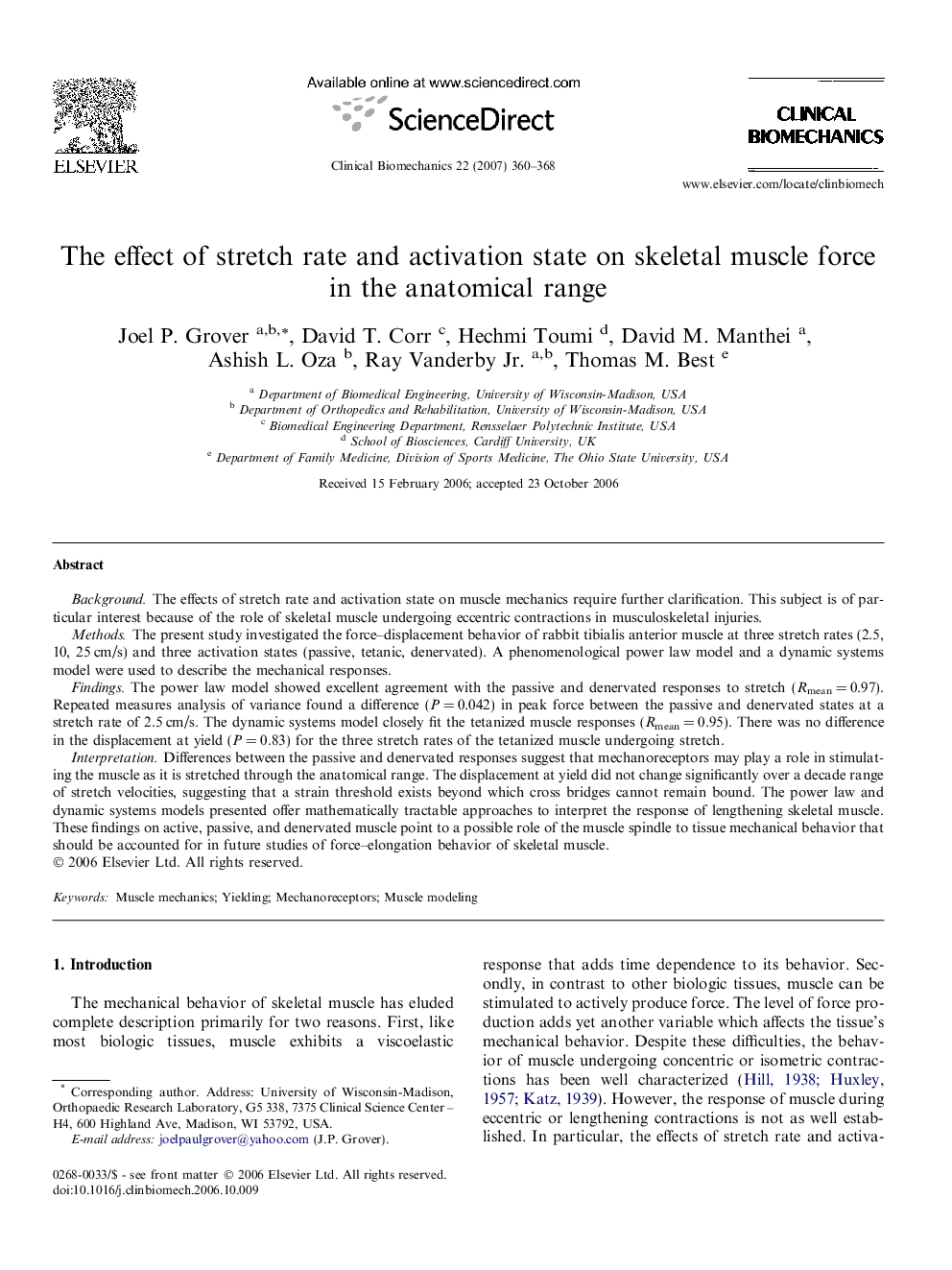| کد مقاله | کد نشریه | سال انتشار | مقاله انگلیسی | نسخه تمام متن |
|---|---|---|---|---|
| 4051711 | 1265005 | 2007 | 9 صفحه PDF | دانلود رایگان |

BackgroundThe effects of stretch rate and activation state on muscle mechanics require further clarification. This subject is of particular interest because of the role of skeletal muscle undergoing eccentric contractions in musculoskeletal injuries.MethodsThe present study investigated the force–displacement behavior of rabbit tibialis anterior muscle at three stretch rates (2.5, 10, 25 cm/s) and three activation states (passive, tetanic, denervated). A phenomenological power law model and a dynamic systems model were used to describe the mechanical responses.FindingsThe power law model showed excellent agreement with the passive and denervated responses to stretch (Rmean = 0.97). Repeated measures analysis of variance found a difference (P = 0.042) in peak force between the passive and denervated states at a stretch rate of 2.5 cm/s. The dynamic systems model closely fit the tetanized muscle responses (Rmean = 0.95). There was no difference in the displacement at yield (P = 0.83) for the three stretch rates of the tetanized muscle undergoing stretch.InterpretationDifferences between the passive and denervated responses suggest that mechanoreceptors may play a role in stimulating the muscle as it is stretched through the anatomical range. The displacement at yield did not change significantly over a decade range of stretch velocities, suggesting that a strain threshold exists beyond which cross bridges cannot remain bound. The power law and dynamic systems models presented offer mathematically tractable approaches to interpret the response of lengthening skeletal muscle. These findings on active, passive, and denervated muscle point to a possible role of the muscle spindle to tissue mechanical behavior that should be accounted for in future studies of force–elongation behavior of skeletal muscle.
Journal: Clinical Biomechanics - Volume 22, Issue 3, March 2007, Pages 360–368